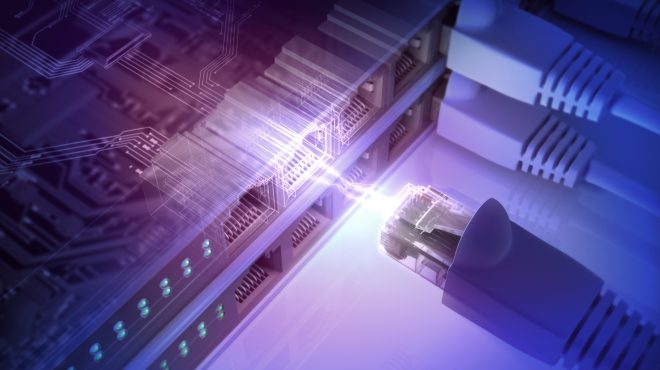
Pioneering Connector Technology: A Look into the Future
Over the last few decades, digitalization has revolutionized companies, industries and our everyday lives. Reliable connections - or more precisely, the tools responsible for them, such as connectors - have become central elements of electronic processes. They are not only the invisible framework that links systems and services together, but also enable innovation and increased efficiency in almost every area. In this article, Bürklin Elektronik takes a closer look at modern connector technologies and examines their importance in future developments.
The core components of electronic connections: Connectors and plug connectors
In electronics, connectors and plug connectors are fundamental building blocks. Both enable critical connections between components. Connectors are standardized components that create the basic structure for digital data exchange via a prefabricated framework. They facilitate communication processes of all kinds and enable a wide range of connection solutions. Plug connectors, on the other hand, are specifically designed for physical plugging and unplugging.
Simply put, however, both component types serve as a “bridge” for electrical signals. The conclusion: Plug connectors and connectors are similar in their function, but are not one and the same per se. They are two types of essential components that are equally needed to ensure the integrity and efficiency of electronic systems.
Pioneering connector technologies
In the digital age, virtual networking and the constant communication of individual devices are constantly gaining momentum. Connectors act as silent heroes in the background. In terms of technology, they have also continued to develop thanks to the innovative momentum of recent years and are now more complex and powerful than ever before. From simple connecting elements, connectors have now become intelligent, versatile and flexible components that ensure the seamless exchange of data and information. An overview of the three most advanced developments:
The rise of data connectors
Data rules the world – at least when it comes to innovative digitalization processes. For this reason, data connectors play a crucial role in the modern IT landscape. Originally designed to facilitate access to databases, they have now evolved into powerful tools. Why? Connector technology makes it possible to integrate into an increasingly complex data structure as part of business or private projects. Developers and entrepreneurs gain increasing flexibility and can gain a competitive advantage by increasing efficiency.
After all, data is of enormous value – but must be managed and distributed correctly in order to be used profitably. Data connectors are used, for example, on e-commerce platforms for real-time queries of transaction data and customer analyses. In financial technology, on the other hand, they are used to access financial data from various database structures, including relational and NoSQL databases. Typical features of data connectors:
- Versatility: Modern applications often require access to different data sources simultaneously. In this case, database connectors offer seamless integration and interoperability.
- Lightweight architecture: With the shift towards microservices and containerized applications, lightweight, highly available connectors are in demand. They can be scaled quickly and meet the elastic requirements of cloud-based applications.
Cloud connectors: key technology in the networked world
Cloud connectors are indispensable in today’s digitally transformed world. Cloud-based applications have already arrived in the heart of society and industry. However, secure connectivity solutions are needed to get valuable data from IoT devices, machines and appliances to the higher-level cloud database. Cloud connectors enable companies to work faster and more efficiently. They adapt quickly to market changes and enable the seamless connection of various online services. From simple business automation to real-time notifications of stock changes in an ERP system – cloud connectors make it possible!
- Intelligence & flexibility: Data can not only be transferred, but also transformed in real time to make it suitable for the target context. Support for various data formats also allows broad interoperability between a wide range of cloud services.
- Automation: By creating complex workflows between different applications, processes can be optimized and resources saved. Based on the integration of event-driven architectures, changes in one system can be responded to immediately with corresponding actions in other systems.
Enterprise Service Bus (ESB): the central interface for enterprise services
Enterprise Service Bus (ESB) technology has established itself as a central integration tool in corporate IT. Its primary function is to connect a variety of applications, data sources and services, with an ESB often acting as an intermediary between systems with different data formats and communication protocols. In short, an ESB makes life easier in complex IT environments and in this respect serves as a central intermediary for data between different system landscapes.
On the one hand, the tool acts as an integration point, but on the other hand it also ensures that data is transmitted efficiently and in the appropriate format. Supply chain management is a classic area in which ESBs are particularly popular. However, industries that need to access and interact with customer data from CRM systems and other sources in real time also rely on this valuable interface. Characteristic features at a glance:
- Integration and transformation: More than just a data transmitter – the ESB can transform and enrich data so that it can be used by different recipient systems.
- API management: Beyond pure data integration, the ESB has increasingly developed into a manager of APIs (Application Programming Interfaces). This includes providing, monitoring and securing APIs to ensure that data flows securely and efficiently.
Connectors: Bridge builders of the digital future
Connectors are far more than just technical components – they are the cornerstone in the effort to realize constant networking and information exchange in real time. In our innovation-driven world, they are invaluable and create the basic framework for innovation, efficiency and further development. Huge amounts of data, cloud systems and enterprise service bus interfaces will continue to play an important role in the years to come and will continue to evolve.
Trends in the field of plug connectors
Are you interested in reliable and secure connection solutions? Development is not standing still in the plug connector sector either – quite the opposite! Bürklin Elektronik has the trends on its radar and has comprehensively analyzed all the key developments for you in the Electronics Competence section. Miniaturization, IIoT integration and increased data transfer rates – take a look into the future with us and be inspired by the possibilities of the next generation of connectors. Read now!


